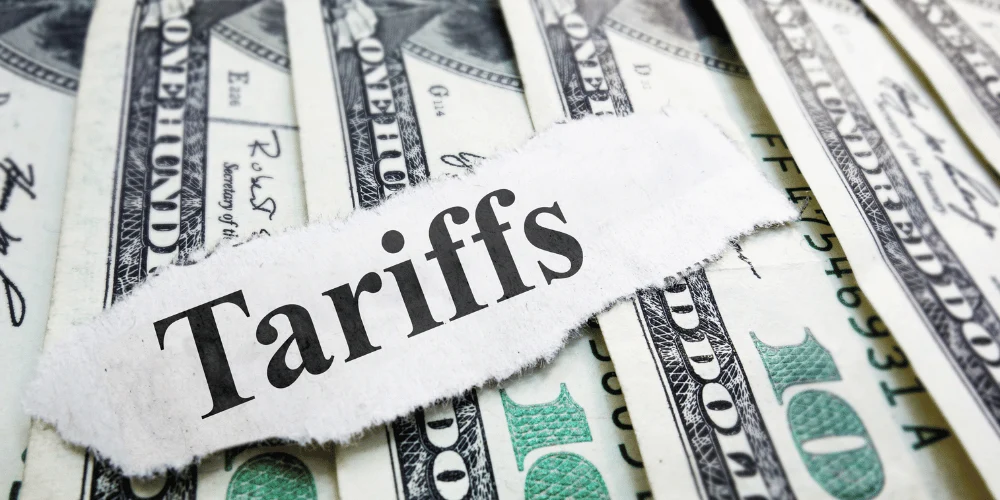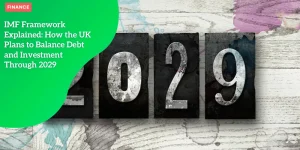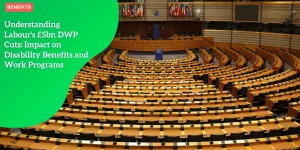Chancellor Reeves’ £9.9 Billion Budget Squeeze: Understanding the New Welfare Cuts
Anúncios
The Current Economic Landscape
The UK is facing a tough economic landscape marked by stagnating growth, rising inflation, and increasing borrowing costs.
Since Chancellor Rachel Reeves delivered her first budget in October, circumstances have changed significantly, wiping out the Treasury’s £9.9 billion buffer.
Anúncios
The aftermath of the pandemic, Brexit, and geopolitical tensions have compounded the problem, making it difficult for the country to get back on its financial feet.
Economic Growth Stagnation
Economic growth in the UK has flatlined, contributing to the mounting fiscal pressure.
Anúncios
With businesses struggling to recover, consumer confidence is at a low, further hampering economic activities.
This stagnation in growth combined with external economic pressures has had a profound effect on the country’s overall financial health.
Rising Inflation and Borrowing Costs
Inflation has been another critical challenge.
As the cost of goods and services increases, the purchasing power of citizens decreases, affecting their standard of living.
Over the past few months, inflation has surged, pushing costs even higher.
To combat inflation, borrowing costs have also been hiked, leading to increased financial strain for both individuals and businesses.
These rising costs have made it harder for the government to allocate funds effectively, requiring difficult fiscal decisions.
Impact of US Tariff Wars
Another layer of complexity is added by the looming US tariff wars, threatening to hit the British economy further.
Trade tensions can result in increased costs for exports and imports, impacting businesses that rely on international trade.
The potential fallout from these tariffs could exacerbate the UK’s economic woes, making the already challenging fiscal climate even tougher to navigate.
As these financial hurdles multiply, the government is pressed to adjust its fiscal strategies.
The combination of stagnant growth, inflation, and external economic pressures creates a scenario where maintaining fiscal balance becomes increasingly difficult.
The upcoming welfare cuts and stringent fiscal rules will likely be pivotal in addressing these challenges.
The impending welfare cuts—notably targeted at reducing health-related benefit payments—are expected to be politically charged and economically significant.
How these cuts will play out in the broader effort to stimulate economic growth, manage inflation, and navigate tariff pressures will be closely watched in the coming months.

Understanding the Proposed Welfare Cuts
The tightening fiscal policies proposed by Chancellor Rachel Reeves have sparked a heated debate.
The government aims to navigate the economic stagnation and rising inflation with stringent measures, including significant welfare cuts.
Let’s dive deeper into these proposed welfare cuts and their various aspects.
Focus on Health-Related Benefit Payments
The primary target for welfare reductions is the health-related benefit payments, which have surged significantly over recent years.
This rise has triggered concerns about sustainability and has led to the decision to focus cuts on this area.
According to Treasury sources, the burgeoning costs in the welfare bill, particularly since the pandemic, make this an essential area for cutbacks.
Plans for Civil Service Cuts
Alongside reductions in welfare, the government has set its sights on trimming civil service costs.
The aim is to decrease the headcount, a move in line with strategies employed by past administrations.
This cost-cutting measure is expected to reduce operational expenses and align with the fiscal rules imposed by the government.
Strict Fiscal Rules
The stringent fiscal rules form the backbone of the proposed cuts.
These rules prohibit borrowing for day-to-day expenses and mandate a reduction in debt relative to the country’s GDP.
The commitment to these rules is intended to ensure long-term fiscal stability.
However, this approach requires navigating the fine line between reducing deficits and sustaining essential public services.
The Office for Budget Responsibility (OBR) will closely monitor and reflect these fiscal measures in their forecasts.
The adherence to these rules highlights the government’s focus on fiscal prudence, despite the looming economic uncertainties.
Despite the strategic rationale behind these measures, their practical implications and effectiveness remain a matter of extensive discussion.
This complex issue continues to evolve, as stakeholders from various sectors express their concerns and propose alternative solutions.
Looking ahead, the balance between fiscal responsibility and maintaining robust public services will be a crucial theme in the ongoing economic discourse.
The Government’s Justification
As the UK government grapples with rising inflation and stagnant economic growth, Chancellor Rachel Reeves has set her sights on curbing the welfare budget as a critical part of her fiscal strategy.
The justification for these measures centers around two core arguments: the moral imperative to support employment and the pressing need to address the unsustainable increase in welfare spending.
Moral Case for Employment Support
Chancellor Reeves and other government officials assert that there is a moral obligation to ensure that those who can work are given the opportunity and support to do so.
Justice Secretary Shabana Mahmood recently highlighted this stance, emphasizing the need to make sure people who are able to work can actually participate in the workforce.
The government’s position is that encouraging employment not only benefits individuals by promoting self-sufficiency and personal development but also bolsters the economy by reducing dependency on state support.
Addressing Unsustainable Welfare Growth
The justification for the proposed welfare cuts also hinges on the claim that the current state of welfare spending has become untenable.
According to officials, there has been a significant increase in the welfare budget, particularly in health-related benefit payments, which has ballooned since the onset of the pandemic.
Mahmood noted that millions of people in the UK who wish to work are currently out of the labor market.
Thus, the cuts aim to recalibrate welfare spending to more sustainable levels, ensuring that support is reserved for those who genuinely need it, while encouraging others to re-enter the workforce.
Emphasis on Labor Market Participation
The government’s approach includes not only reducing welfare payments but also implementing measures to support individuals in staying within or returning to the labor market.
This dual strategy is presented as a way to enhance both economic participation and productivity.
As part of the broader fiscal policy, strict rules preventing day-to-day borrowing and mandating debt reduction relative to GDP are enforced to project fiscal responsibility and long-term economic stability.
These measures, while grounded in principled ideas, face significant scrutiny and debate.
How these policies will impact the broader economic landscape remains to be seen, as stakeholders continue to voice their support and concerns.
Critical Response and Opposition
Economists’ Warnings: Inflexible Fiscal Targets
A growing number of economists have raised flags about the government’s rigid fiscal framework and its possible fallout.
Economists argue that adhering strictly to these fiscal targets could push the economy into more tax and spending adjustments, even at times when flexibility would be more beneficial.
Calls for a reconsideration of these inflexible fiscal policies have grown louder, as achieving these targets might soon necessitate unforeseen tax hikes or budget cuts.
Research economist Matthew Oulton observed that Chancellor Rachel Reeves has effectively “engineered a trap” for herself by aiming to meet these pass–fail targets by the narrowest margins.
This delicate balancing act risks becoming unsustainable if economic conditions further decline, leaving little room for maneuvering.
Disproportionate Impact on Poor Citizens
Critics argue that the proposed welfare cuts are likely to disproportionately affect the poorest in society.
The New Economics Foundation has emphasized that these cuts will exacerbate living standard declines for the most vulnerable, directly undermining the government’s stated goals of growth and child poverty reduction.
The think tank’s deputy chief executive, Hannah Peaker, mentioned that the rationale for the fiscal rules is self-imposed and could be adjusted.
Peaker highlighted that sticking to austerity measures at a time when raising revenue through other means could alleviate the strain on public services is counterproductive.
Union and SNP Criticisms
The response from unions has been particularly harsh.
The Labour-affiliated Fire Brigades Union (FBU) warned that these welfare cut proposals mirror the austerity policies reminiscent of former Chancellor George Osborne.
Steve Wright, the general secretary of FBU, called the cuts an “outrageous attack on the poorest and most vulnerable,” urging the Chancellor to consider taxing the wealthier sectors to fund public services adequately.
Similarly, the Public and Commercial Services (PCS) union has warned that job cuts within the civil service would degrade public services significantly, while reductions in disability benefits would plunge people further into poverty.
The PCS general secretary, Fran Heathcote, expressed disappointment, stating that they hoped a Labour government would understand the havoc previously wrought by austerity.
Furthermore, the Scottish National Party (SNP) has lambasted the proposed cuts as a betrayal of electoral commitments.
SNP Westminster leader Stephen Flynn pointed out that slashing billions from public services would be “deeply damaging” for Scotland.
Flynn criticized that the Labour Party’s plan breaks promises made during the elections, further eroding trust in the government.
This matrix of opposition underscores the considerable political challenges that Prime Minister Keir Starmer and Chancellor Rachel Reeves face.
Handling these criticisms while balancing fiscal responsibility with public expectations will undoubtedly shape the UK’s economic and political landscape in the coming months.
Political Implications
Significant political challenges for Prime Minister Keir Starmer and Labour leadership
Prime Minister Keir Starmer and the Labour leadership are facing a turbulent political landscape.
Proposing significant welfare cuts has generated substantial backlash, testing Starmer’s political acumen and the party’s resolve.
Historically, Labour has been seen as a champion of welfare and public support systems, making these proposed cuts particularly controversial.
Tension between fiscal responsibility and maintaining electoral support
The tension in the Labour camp revolves around finding a balance between fiscal responsibility and retaining their electoral base.
On one hand, strict fiscal rules are geared towards ensuring long-term economic stability by preventing day-to-day borrowing and mandating debt reduction relative to GDP.
However, these rules have placed the government in a bind, as economic conditions require difficult decisions that might not align with public sentiment.
Chancellor Rachel Reeves’ commitment to meeting these fiscal targets means that welfare and civil service cuts are on the table.
This approach could alienate Labour’s core voters, particularly those who rely heavily on state support.
Additionally, the potential job losses in the civil service add to the woes, with employees and their unions voicing robust opposition.
Debate over alternative approaches to raising revenue versus austerity measures
The debate over how to address the economic challenges is fierce.
Critics argue that the government’s emphasis on austerity measures, particularly the reduction in health-related benefit payments, verges on regressive.
Figures from union leaders to economists have echoed concerns that these cuts would disproportionately impact the poorest citizens and exacerbate child poverty.
They advocate for exploring alternative revenue-raising methods, such as increased taxes on the wealthy, rather than resorting to deep cuts in welfare.
Economists and think tanks have pointed out that Reeves’ fiscal constraints are self-imposed and could be adjusted.
For instance, the New Economics Foundation has called for reconsideration of these fiscal rules, suggesting they could be changed “at the flick of the chancellor’s pen” to provide more flexible and humane solutions.
Some proposed alternatives include progressive taxation or revisiting corporate tax policies to ensure that the economy’s most resilient parts shoulder a fair share of the fiscal burden.
Navigating the complex political landscape
Navigating this complex political landscape requires skilled attention from Starmer and the Labour leadership.
Any perceived backtracking on election promises, as highlighted by the SNP, can be politically damaging.
The accusation of reverting to austerity measures reminiscent of the previous Conservative government further complicates Starmer’s ability to present Labour as a party of change and progress.
The backdrop of international pressures, such as the impending US tariff wars, adds an extra layer of complexity.
It’s clear that the government has to handle both internal political challenges and external economic threats adeptly.
This balancing act will require strategic compromise and keen political maneuvering.
Managing these intersecting pressures will be essential for the Labour government to maintain its position and navigate through the controversies and criticisms.






